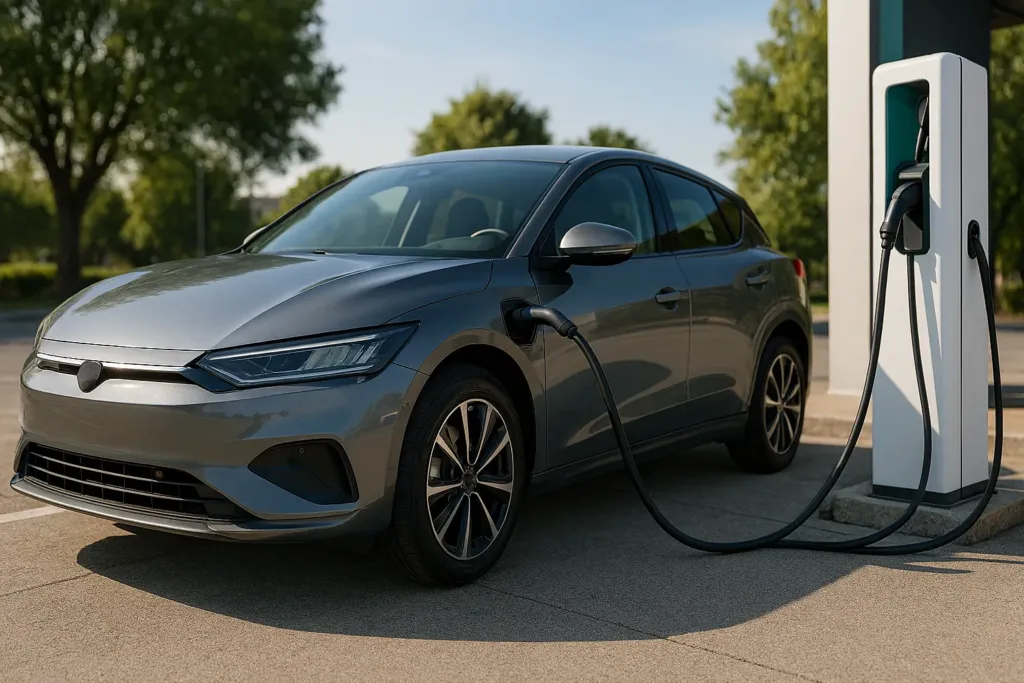Электромобили уже не редкость, но за их бесшумной ездой и элегантным дизайном скрывается целый мир увлекательных фактов. От прототипов XIX века до технологий, способных обеспечить электроэнергией целый дом, узнайте, что делает электромобили поистине замечательными даже для самых искушённых автолюбителей.
Электромобили давно перестали быть экзотикой и становятся всё более распространённой частью транспортной системы. Их популярность растёт благодаря экологичности, передовым технологиям и низкой стоимости владения. Однако за их кажущейся простотой скрывается множество интересных фактов.
Первый электромобиль появился гораздо раньше, чем многие думают. Ещё в 1828 году венгерский изобретатель Аньош Едлик создал небольшой прототип с электродвигателем. К концу XIX века электромобили конкурировали с автомобилями на бензине, а в начале XX века в США их было больше, чем автомобилей с двигателем внутреннего сгорания. Однако быстрое развитие инфраструктуры бензиновых автомобилей и массовое производство двигателей внутреннего сгорания отодвинули электротранспорт почти на столетие в тень.
Современные электромобили используют литий-ионные аккумуляторы, которые обеспечивают высокую плотность энергии и длительный срок службы. Примечательно, что аккумулятор электромобиля состоит из тысяч отдельных ячеек, объединённых в модули и блоки, с системами охлаждения и управления зарядкой. Такая конструкция не только оптимизирует энергопотребление, но и продлевает срок службы аккумулятора.
Электродвигатели имеют КПД до 90%, тогда как бензиновые двигатели редко превышают 30–35%. Это означает, что большая часть энергии в электромобиле напрямую используется для движения, а не теряется в виде тепла. Более того, электромобили могут рекуперировать энергию при торможении, возвращая её в аккумулятор.
Миф о медлительности электромобилей давно развенчан. Благодаря мгновенному крутящему моменту электродвигатели обеспечивают впечатляющее ускорение. Некоторые серийные модели могут разгоняться до 100 км/ч менее чем за 3 секунды, соперничая с суперкарами.
Кроме того, электромобили требуют гораздо меньше обслуживания. В них нет масла, свечей зажигания и сложной трансмиссии. Основные расходы приходятся на замену шин, тормозных колодок и, в конечном итоге, на аккумулятор.
Ещё один интересный факт заключается в том, что электромобили могут служить источником энергии для домов. Технология «транспорт-сеть» (V2G) позволяет им возвращать электроэнергию в сеть или питать бытовые приборы во время отключений.
Наконец, электромобили играют решающую роль в переходе на возобновляемые источники энергии. Их можно заряжать от солнечных панелей или ветряных турбин, что делает транспорт полностью безуглеродным.
Электромобили давно перестали быть экзотикой и становятся всё более распространённой частью транспортной системы. Их популярность растёт благодаря экологичности, передовым технологиям и низкой стоимости владения. Однако за их кажущейся простотой скрывается множество интересных фактов.
Первый электромобиль появился гораздо раньше, чем многие думают. Ещё в 1828 году венгерский изобретатель Аньош Едлик создал небольшой прототип с электродвигателем. К концу XIX века электромобили конкурировали с автомобилями на бензине, а в начале XX века в США их было больше, чем автомобилей с двигателем внутреннего сгорания. Однако быстрое развитие инфраструктуры бензиновых автомобилей и массовое производство двигателей внутреннего сгорания отодвинули электротранспорт почти на столетие в тень.
Современные электромобили используют литий-ионные аккумуляторы, которые обеспечивают высокую плотность энергии и длительный срок службы. Примечательно, что аккумулятор электромобиля состоит из тысяч отдельных ячеек, объединённых в модули и блоки, с системами охлаждения и управления зарядкой. Такая конструкция не только оптимизирует энергопотребление, но и продлевает срок службы аккумулятора.
Электродвигатели имеют КПД до 90%, тогда как бензиновые двигатели редко превышают 30–35%. Это означает, что большая часть энергии в электромобиле напрямую используется для движения, а не теряется в виде тепла. Более того, электромобили могут рекуперировать энергию при торможении, возвращая её в аккумулятор.
Миф о медлительности электромобилей давно развенчан. Благодаря мгновенному крутящему моменту электродвигатели обеспечивают впечатляющее ускорение. Некоторые серийные модели могут разгоняться до 100 км/ч менее чем за 3 секунды, соперничая с суперкарами.
Кроме того, электромобили требуют гораздо меньше обслуживания. В них нет масла, свечей зажигания и сложной трансмиссии. Основные расходы приходятся на замену шин, тормозных колодок и, в конечном итоге, на аккумулятор.
Ещё один интересный факт заключается в том, что электромобили могут служить источником энергии для домов. Технология «транспорт-сеть» (V2G) позволяет им возвращать электроэнергию в сеть или питать бытовые приборы во время отключений.
Наконец, электромобили играют решающую роль в переходе на возобновляемые источники энергии. Их можно заряжать от солнечных панелей или ветряных турбин, что делает транспорт полностью безуглеродным.











